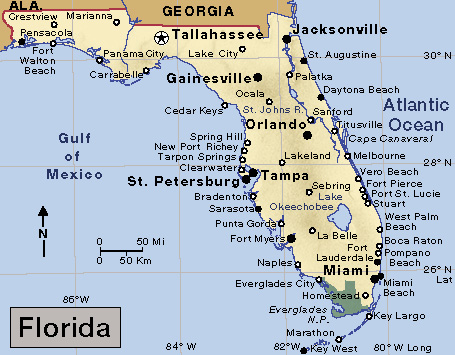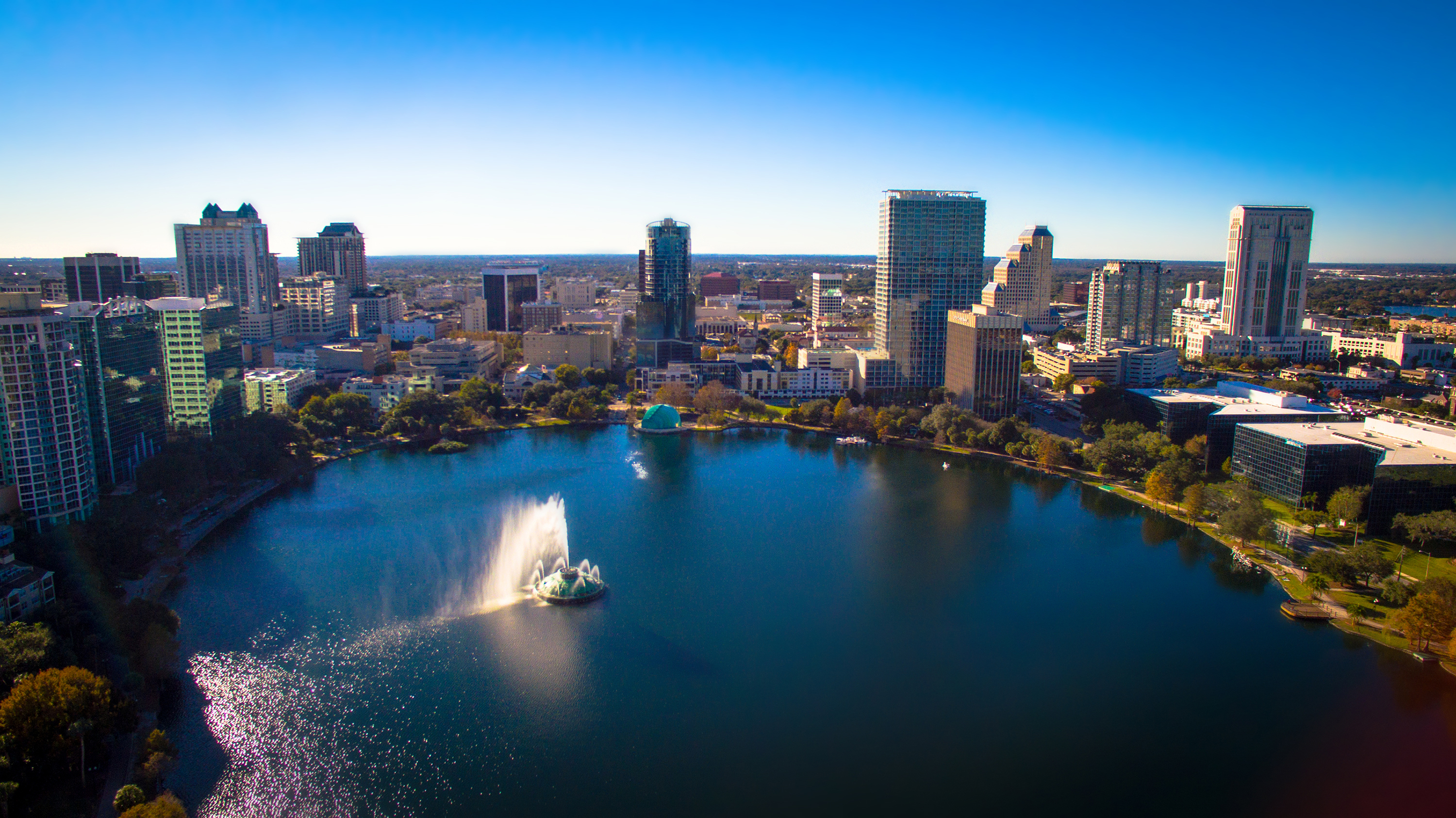Orlando << awr LAN doh >> (pop. 307,573; met. area pop. 2,673,376) is a popular winter resort and tourist center in Florida. Orlando’s warm climate has helped make it one of the fastest-growing cities in the United States. Walt Disney World Resort opened about 15 miles (24 kilometers) southwest of the city in 1971. This famous entertainment center has contributed greatly to Orlando’s rapid growth. Many people, including large numbers of retired citizens, have settled in Orlando because of the mild climate. Orlando’s temperature averages 60 °F (16 °C) in January and 84 °F (29 °C) in July.

Orlando, the county seat of Orange County, lies in central Florida. The city has a mayor-council form of government. Orlando’s museums include the Orange County Regional History Center and the Orlando Science Center, which features the Dr. Phillips CineDome, a theater that presents large-format films, planetarium shows, and laser light performances. The University of Central Florida is in Orlando. The city is also the home of the Orlando Magic of the National Basketball Association.
Orlando’s chief industry is tourism, and Walt Disney World Resort is its chief employer. Other major employers include Lockheed Martin, an aerospace firm; hospitals; and supermarket and department store chains. Orlando International Airport, which handles domestic and international flights, lies southeast of downtown. The Brightline, a high-speed rail service, connects Orlando to Fort Lauderdale, Miami, West Palm Beach, and other cities in southern Florida. A commuter rail line, the SunRail, runs from southern Orlando to the community of DeBary, north of the city.

The Seminole people lived in what is now Orlando before white European settlers first arrived in 1837. In 1850, the settlement was named Jernigan for Aaron Jernigan, an Orange County trader. It became known as Orlando in 1857. This name probably honors Orlando Reeves, a soldier who died in a battle with the Seminole.
Orlando’s first major period of growth followed demands of early citrus fruit growers for better transportation for their crops. A railroad reached the city in 1881, and more planters started citrus groves during the 1890’s. In the early 1900’s, a real estate boom helped increase the population of Orlando and many other Florida communities. Orlando’s population grew from 9,282 in 1920 to 52,367 in 1950.
The development of Walt Disney World Resort led to many construction projects in Orlando. They included apartment buildings, banks, hotels, motels, restaurants, and shopping areas. In 1972, Orlando completed a new Municipal Justice Building. A Civic Theatre (now the Orlando Family Stage) opened in 1973. In 1982, Walt Disney Productions opened Epcot (Experimental Prototype Community of Tomorrow), a permanent world’s fair, at Walt Disney World Resort. Disney-MGM Studios (now Disney’s Hollywood Studios) opened in 1989. Disney’s Animal Kingdom, which opened in 1998, displays hundreds of animals in re-creations of a jungle, savanna, and other habitats. Universal Studios Florida—a motion-picture and television studio and theme park—opened in Orlando in 1990.
In June 2016, Orlando became the site of one of the worst mass shootings in United States history. A gunman shot about 100 people, killing 49, at a gay nightclub in the city before he was killed by police. Police said that the shooter had professed his allegiance to an Islamic terrorist group.
